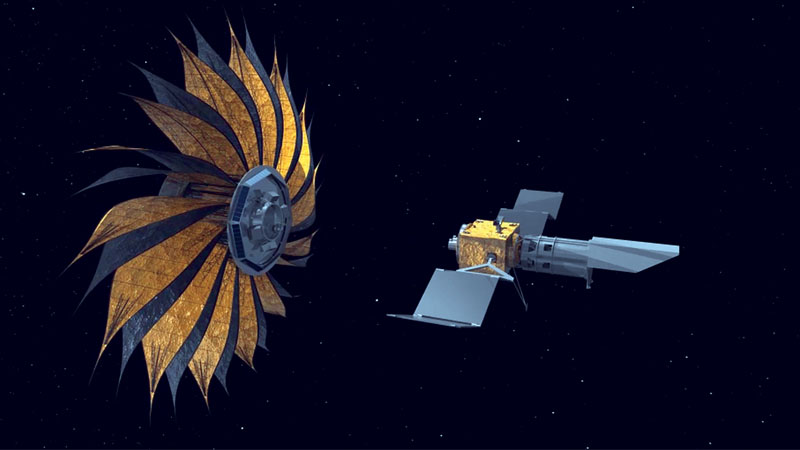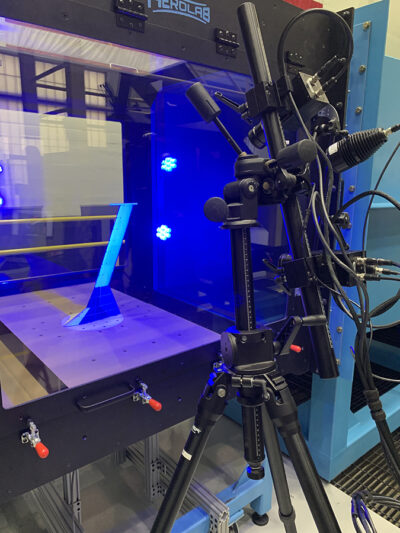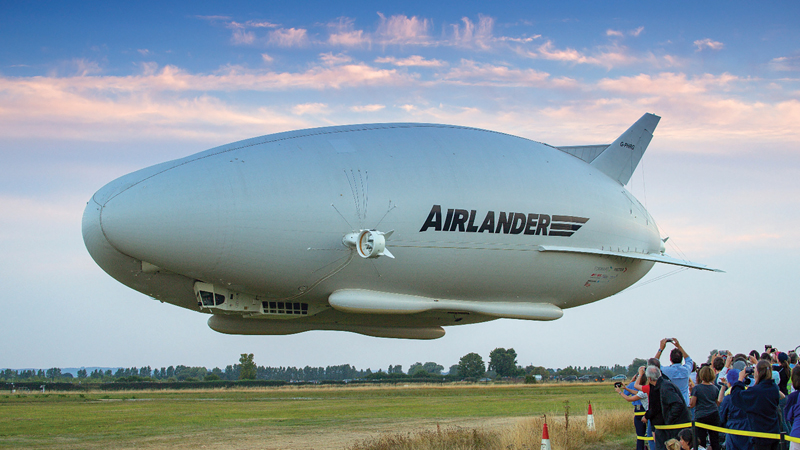Harnessing solar power via microwave
By Mark Lake, Sergion Pellegrino, and Jonathan Sauder|December 2016
The Spacecraft Structures Technical Committee focuses on the unique challenges associated with the design, analysis, fabrication and testing of spacecraft structures.
This marked the third year since the Spacecraft Structures Technical Committee was formed from the former Gossamer Spacecraft Program Committee. The committee continues to actively recruit AIAA-related members interested in advancing the state of the art in this field.
Collecting solar power in space and transmitting it using microwaves has long appealed to the imagination of science fiction writers and aerospace visionaries. The Space Solar Power Initiative at CalTech, with support from Northrop Grumman Corp., is working toward turning this vision into reality by developing the critical technologies necessary to make space solar power economically feasible. The proposed system concept is a formation of ultralight deployable structural modules with high efficiency photovoltaics and microwave transmission antennas, supporting an array of foldable multifunctional tiles.
A gigawatt scale system would require hundreds of identical square modules flying in formation in a geosynchronous orbit, each with a size of 60 meters by 60 meters in the deployed configuration. Researchers in the Space Structures Laboratory at CalTech have developed a novel architecture for the modules, which uses high-strain composite strips that are tightly wrapped.
Smallsats and cubesats provide an opportunity to perform new science in a small package. While the miniaturization of electronics, propulsions systems, reaction wheels and many other components have enabled highly capable small satellites, one thing that cannot be miniaturized is antenna aperture. Consequently, there is a need for deployable, high-gain antennas that are useful for both telecom and radar applications. NASA’s Jet Propulsion Laboratory at CalTech initiated a three-year research and development task to develop a 0.5 meter Ka-band (32-35 gigahertz) antenna that would produce an unprecedented 42 decibels relative to isotropic of gain, while stowing in 1.5 U form factor (10 by 10 by 17 centimeters) and weighing less than 3 kilograms. Additionally, with a height of just 16 cm and a mass of under 1.4 kg, the antenna surpasses its other design goals. The radar version of this antenna is being used to enable the RainCube atmospheric profiling radar in a cubesat mission, which is scheduled to launch in December 2017.
In January, NASA formed a Starshade Readiness Working Group to develop formal plans for validating the necessary technology for a starshade in time for a rendezvous with the Wide Field Infrared Survey Telescope, or WFIRST, in the mid-2020 time frame. NASA in April formally designated the starshade as a “technology development activity,” and integrated disparate related projects at Princeton University, Northrop Grumman Aerospace Systems, and NASA JPL into JPL’s “Starshade Technology Project.” The goal is to mature all of the starshade’s advanced deployable structures technologies before the end of the decade for consideration as an upgrade to the current WFIRST mission architecture during the next astrophysics decadal survey in 2020.
During 2016, JPL’s Starshade Technology team, with support from Roccor LLC of Longmont, Colorado, completed fabrication and testing of 2 m and 5 m starshade engineering models to understand intricacies of the system’s origami-like deployment kinematics, and evolve a more complete set of system engineering requirements to drive future technology and hardware development efforts.
Finally, the technical committee is preparing the “Handbook of Testing Large, Ultra-Lightweight Spacecraft.” The handbook will provide both the theory and especially the practice of testing these unique spacecraft for project managers and technical specialists. Eleven chapters are under development by leading experts in the field. Expected publication by AIAA is in 2017.



































